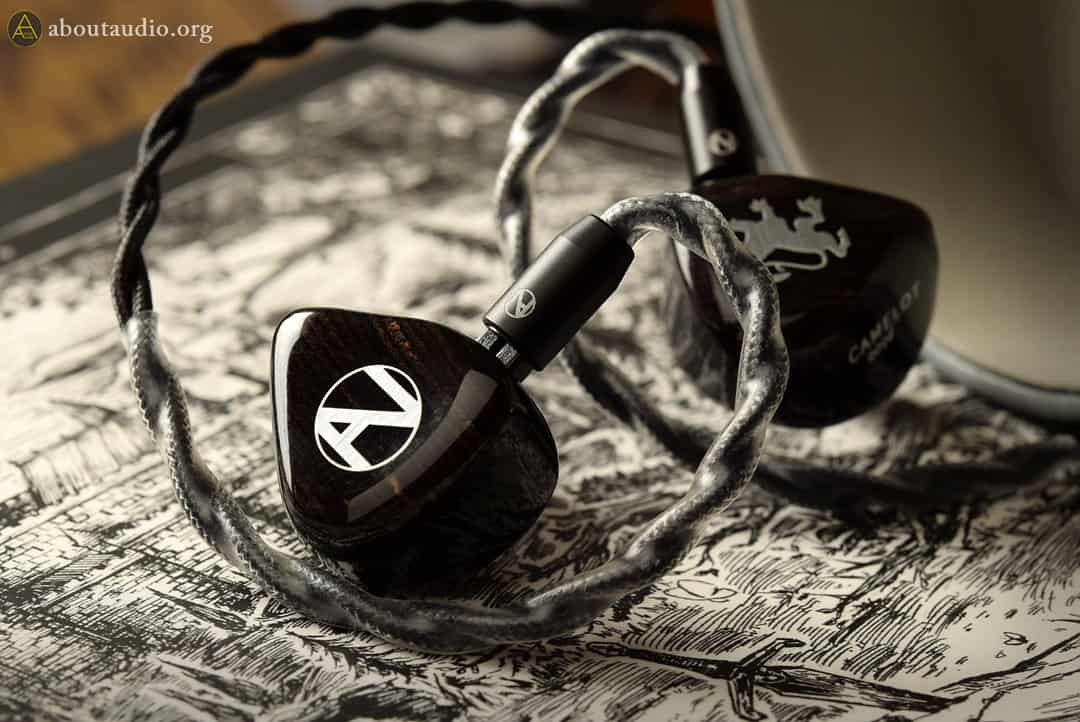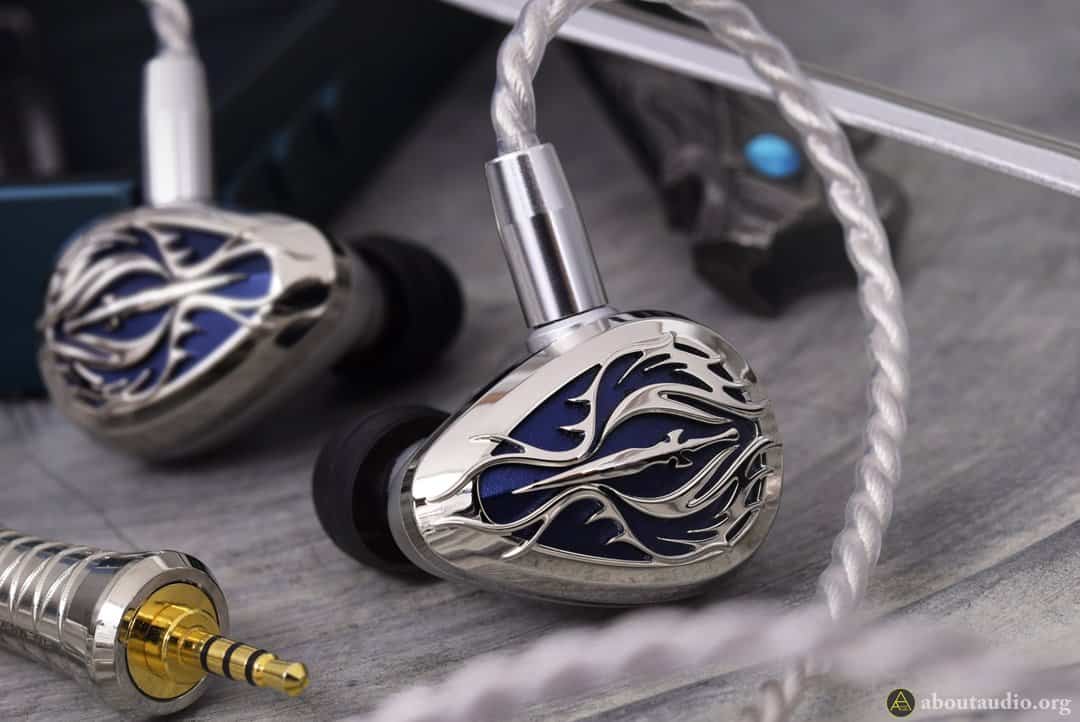
Sound impressions: Low Frequencies / Bass
Tesseract has a gentle w-shaped sound signature that lightly and evenly highlights the three frequency ranges. Tesseract sports a BA-style bass that highlights the snappy speed and tightness, yet is still smooth enough to the texture. Tesseract’s bass also has great consistency and harmony that brings out better, more natural dynamics than most full-BA IEMs.
The bass is punchy and powerful. There’s good color and depth despite being fully produced by BA drivers. The bass reverbs aren’t strong to the point of satisfying those looking for bombastic bass. However, the bass has great extension and is well-bodied. Alongside, the bass is instead very thick in color which allows the low range to make a strong presence in the music. In the end, Tesseract tried to achieve the best of both worlds – the strong depth and clean control over the low range – and it succeeded.
For those who prefer speedy, dense bass that can also deliver a weighty slam, you’ll love this one. The bass quantity is about 80% of what a basshead IEM would have, yet at the same time, the bass feels amazingly stable and even. Tesseract worked the bass to sound reference-like while packing in an incredible level of dynamics.

Sound impressions: Mid-range / Overall Tuning
Vocals take a small step forward from the bass and have a neutral-thick body. Vocals keep a transparent, open-ended presentation that constantly introduces a pleasant airiness to the field. Tesseract differs from general audiophile IEMs. The power of Tesseract’s sound signature is that the sound is extremely accurate and neutral – or in other words, has the characteristics of monitoring IEM.

Tesseract focuses on accuracy, evenness, and high resolution. The first strength, the accuracy. I mean accuracy in both tone and texture. Tesseract is like a video editing monitor. while other IEMs are added with coloration, special effects, and all other tweaks to create their version of a scene.
The vocal tone may be relatively plain because they’re meant to accurately reproduce what the music source has and convey less coloration. Tesseract shares similarity in this sense, having less MSG to the sound. However, this also means Tesseract’s “water-like” timbre and tuning will remain timeless. The first impact may not be as strong as others, yet you wouldn’t get bored out as easily as other IEMs.
The second strength of this tuning is the evenness. The vocal dynamics are also on the calmer side, as the tone and intensity of the vocals are incredibly steady. There are no audible dips, sibilance, tonal change, etc. Such evenness then introduces Tesseract’s third strength – high resolution. Vocals are layered out flat and large so that you can take a closer look, and feel the tone and texture. I should mention that although the vocals sound flat, the layerings are incredibly well divided. Hence the vocals still sound three-dimensional.

Sound impressions: Trebles / Soundstage
Trebles take a similar approach as the vocals did, keeping things neutral, even, and relatively linear. The treble notes are crisp and clear yet they never feel unnatural in texture. Trebles are also completely fatigue-free although they’re not recessed, which is impressive. The texture is not mushy nor rigid, keeping the perfectly cooked al dente trebles.
I also like how the treble instrumentals have good spacing between each other. Some other multi-BA IEMs have the same level of clarity as Tesseract but the trebles sound rather congested or feel like one big lump. Meanwhile, as described in the previous paragraph, Tesseract’s ability to broadly and evenly spread out the texture details shines even brighter on the high notes. This also aids in creating a large, expansive headroom for Tesseract.
Although the mids and highs keep the atmosphere fairly linear, the overall listening experience of Tesseract doesn’t feel flat at all. It’s very dynamic, in fact. The low range acts as a solid foundation for the dynamic and spatial feels of Tesseract, while upper frequencies cleanse the atmosphere with their reference nature. The pleasant wideness brought by evenly spread out trebles also aids the soundstage.

Compared to Nostalgia Audio Camelot (Review link)
Tesseract feels more agile in overall sound which plays well with speedy and tacky songs. The texture and timbre feel more “homogeneous” which keeps the nuance very consistent throughout the range. Tesseract also has an airier, transparent, and cheerful tone that carries out more sweetness to the vocals. Alongside, Tesseract’s sound signature has better penetration, reducing the reverbs and instead highlighting a straight, accurate sound.
Camelot is superior when it comes to the bass response. The bass damping and dynamics feel more elastic, continuous, and groovy than Tesseract. Camelot’s bass is also better in terms of color and extension which better retrieves the ultra-low details. Although Tesseract brings out more sweetness to the timbre, Camelot’s tone is just as attractive. Camelot has a very lush and spatial tone that is unique in its way. Hence Camelot has better lushness and creaminess to the tone.
Camelot is gently more elevated in reverbs and spatialness. Although the sound may not be as responsive as Tesseract, Camelot highlights this “premium” nuance to ooze out. These two IEMs are very equal in terms of performance, so choosing between them would only come down to the decision of preferring a clean reference tuning or a musically lush tuning.

Compared to MMR Balmung (Review link)
Balmung has a warmer, darker sound than Tesseract. Balmung is superior in the fullness and depth of the bass. The bass feels thicker and smoother. The bass also highlights more reverbs, allowing a generous amount of low-end presence to the music. Balmung brings out more depth to the vocals and allows to vocals to interact more with the other frequencies. Vocals don’t get as near to the ears as Tesseract, yet the vocals are more harmonious to the overall music. In general, Balmung offers a noticeably more comfortable, fatigue-free sound than Tesseract.
While Balmung has a higher hand in presenting the bass more musically, Tesseract wins in technical accuracy. Tesseract extrudes the vocals close to the ears and has a drier texture (only relative to Balmung). Clarity is prioritized on Tesseract, hence the sound is overall more transparent and closer to the ears. While the sound is more linear, Tesseract’s lows and highs are tighter and cleaner.
While Tesseract is finely tuned to keep the fatigue level low, Tesseract is still more prone to ear fatigue than Balmung under long listening. If you seek a fatigue-free, warmer, and musical sound, Balmung is the one to go. However, if you want crystal-clear transparency and technical agility, Tesseract would be recommended.

The Power of Reference Tuning
I’ve been mentioning Tesseract to have characteristics of a monitoring IEM rather than just referring to it as such, and there’s a good reason for it. Tesseract is an earphone that upholds the essence of a monitoring IEM while fusing in a lot of musical enjoyment, achieving the best of both worlds – reference and musical tuning.
I can see Nostalgia tried to make Tesseract different from most average monitoring earphones. Despite the reference tuning, Tesseract has top-quality bass that could easily outplay basshead IEMs. Most importantly, it doesn’t sound boring. Of course, some may still find this sound plain if you’re into V-shaped tunings, but most should be pleased with this nice blend of neutrality and musicality. If you’re into a clean-sounding reference tuning or would like to hear the true tone and color of your beloved music, you might wanna be one of the 150 owners.

Thanks for reading. Sharing and dropping a comment will encourage me greatly.


